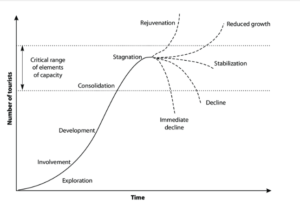Hartlepool Council take on the role of helping and supporting tourists. One way they do this is by having a readily available Tourist Information Centre. Visitors can use the Tourist Information Centre to get help with accommodation or any other concerns they may have. If they need any advice or questions answering then the local Council’s centre makes sure they are answered. It is located in the Art Gallery. By providing the centre, the Council has succeeded in supporting tourists and it ensures that visitors will contribute to the economy because they have been guided in the direction of the best services. (This is Hartlepool, no date).

 (This is Hartlepool, no date).
(This is Hartlepool, no date).
Following on from the role of supporting tourists, Hartlepool’s local Council have a tourism homepage on their council site. This page summarises that Hartlepool has a lot of things to do, attractions to visit, places to eat, places to stay etc. They provide a direct link to the explore Hartlepool page where visitors can gather further information. The Council’s Economic Growth Team work closely with the tourism stakeholders to help develop tourism by providing them with advice and support. (Hartlepool Borough Council, no date).

(Hartlepool Borough Council, no date).
The ‘Explore Hartlepool’ provides visitors with further information on topics such as:
- Dates for upcoming events.
- The location for the places to eat and stay.
- The locations of the best attractions.
(Explore Hartlepool, no date).




(Explore Hartlepool, no date).
Another role of the local Council is to invest money into the regeneration of Hartlepool so that the Town becomes more visually attractive to tourists. They anticipate that this regeneration will be ‘game changing’ Just this year, Hartlepool Borough Council announced their £20 million investment programme. (Hartlepool Mail, 2024).
The Council believe that this multi million pound investment will make a positive difference. They state that this programme will bring together residents, the community and business representatives. By doing this, Hartlepool will have a more positive image/stigma and should hopefully then bring more people into the Town, who will then contribute to Hartlepool’s economy. (Hartlepool Mail, 2024).
References
Explore Hartlepool (no date). Explore Hartlepool. Available at: https://www.explorehartlepool.com/ (Accessed 7 December 2024).
Hartlepool Borough Council (no date). Find out what you can explore and visit in Hartlepool. Available at: https://www.hartlepool.gov.uk/info/20011/sport_leisure_and_culture/1000/welcome_to_the_tourism_homepage (Accessed 30 November 2024).
Hartlepool Mail (2024). £20 million regeneration programme secured for Hartlepool. Available at: https://www.hartlepoolmail.co.uk/news/people/ps20m-regeneration-programme-secured-for-hartlepool-4847535 (Accessed 30 November 2024).
This is Hartlepool (no date). Hartlepool Tourist Information Centre. Available at: https://www.thisishartlepool.co.uk/visit/touristinfo.asp (Accessed 30 November 2024).

